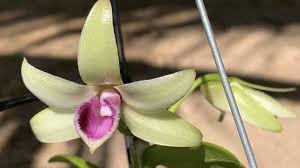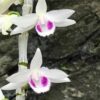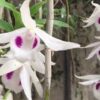# Phalaenopsis Orchids and the Importance of Biodiversity Conservation

## Table of Contents
1. **Introduction**
2. **Understanding Phalaenopsis Orchids**
– 2.1. Characteristics of Phalaenopsis Orchids
– 2.2. Distribution and Habitat
3. **Biodiversity: Definition and Significance**
4. **Threats to Phalaenopsis Orchids and Biodiversity**
– 4.1. Habitat Loss
– 4.2. Climate Change
– 4.3. Over-Exploitation
– 4.4. Invasive Species
5. **Conservation Efforts for Phalaenopsis Orchids**
– 5.1. In-Situ Conservation
– 5.2. Ex-Situ Conservation
– 5.3. Restoration of Natural Habitats
6. **The Role of Phalaenopsis Orchids in Ecosystems**
7. **Cultural Significance and Economic Value**
– 7.1. Traditional Uses
– 7.2. Economic Impact on Communities
8. **Community Engagement and Education**
– 8.1. Importance of Local Communities
– 8.2. Educational Programs
9. **Future Directions for Conservation**
– 9.1. Policy and Legislation
– 9.2. Role of Technology
– 9.3. Global Collaboration
10. **Conclusion**
11. **FAQs**
—
## 1. Introduction
Phalaenopsis orchids, often known as moth orchids, are among the most popular and widely cultivated orchids in the world. Their beauty and adaptability make them a favorite among horticulturists and flower enthusiasts. However, beyond their aesthetic appeal, Phalaenopsis orchids hold a significant place in the realm of biodiversity. This article delves into the importance of conserving biodiversity, with a specific focus on Phalaenopsis orchids and their role in maintaining healthy ecosystems.
—
## 2. Understanding Phalaenopsis Orchids
### 2.1. Characteristics of Phalaenopsis Orchids
Phalaenopsis orchids are characterized by their broad, flat flower petals and long-lasting blooms. Typically, the flowers can be found in various colors, including white, pink, yellow, and purple, with intricate patterns and markings. The plants are epiphytic, meaning they grow on other surfaces like trees, utilizing them for support while deriving moisture and nutrients from the air and rain.
### 2.2. Distribution and Habitat
Native to Southeast Asia, Phalaenopsis orchids thrive in tropical climates with high humidity and consistent temperatures. They can be found in a variety of habitats, including rainforests, montane regions, and even urban areas where they are cultivated in homes and gardens.
—
## 3. Biodiversity: Definition and Significance
Biodiversity refers to the variety of life forms on Earth, encompassing the diversity of species, ecosystems, and genetic variation within species. It plays a crucial role in maintaining ecological balance and provides a range of ecosystem services, including:
– **Pollination**: Many plants, including orchids, rely on animals for pollination, which is vital for their reproduction.
– **Nutrient Cycling**: Diverse ecosystems contribute to nutrient cycling, ensuring that essential nutrients are available for plant growth.
– **Climate Regulation**: Healthy ecosystems help regulate climate and mitigate the effects of climate change.
– **Cultural Value**: Biodiversity enriches cultures and traditions, providing aesthetic, spiritual, and recreational benefits.
—
## 4. Threats to Phalaenopsis Orchids and Biodiversity
Despite their importance, Phalaenopsis orchids and global biodiversity face numerous threats:
### 4.1. Habitat Loss
Urbanization, deforestation, and agricultural expansion have significantly reduced the natural habitats of Phalaenopsis orchids. The destruction of forests not only leads to a loss of orchid populations but also impacts the numerous species that depend on these ecosystems.
### 4.2. Climate Change
Climate change poses a severe risk to biodiversity. Shifts in temperature and rainfall patterns can disrupt the delicate balance of ecosystems, affecting the growth and reproduction of orchids. For instance, increased temperatures may lead to earlier flowering times, which could misalign with the availability of pollinators.
### 4.3. Over-Exploitation
The demand for Phalaenopsis orchids in the floral trade has led to over-collection in the wild. Unsustainable harvesting practices can deplete local populations, making it difficult for them to recover.
### 4.4. Invasive Species
The introduction of non-native species can disrupt local ecosystems, often outcompeting native plants for resources. Invasive species can also introduce new diseases that threaten native orchid populations.
—
## 5. Conservation Efforts for Phalaenopsis Orchids
Effective conservation strategies are essential to protect Phalaenopsis orchids and the ecosystems they inhabit. These strategies can be categorized into two main approaches: in-situ and ex-situ conservation.
### 5.1. In-Situ Conservation
In-situ conservation refers to the preservation of species in their natural habitats. This approach involves:
– **Protected Areas**: Establishing protected areas, such as national parks and nature reserves, can help safeguard orchid populations and their habitats from human activities.
– **Sustainable Land Management**: Promoting sustainable agricultural practices can reduce habitat destruction and maintain biodiversity.
### 5.2. Ex-Situ Conservation
Ex-situ conservation involves the preservation of species outside their natural habitats. This can include:
– **Botanical Gardens**: Botanical gardens play a vital role in conserving orchid species, conducting research, and educating the public about their importance.
– **Seed Banks**: Storing orchid seeds in seed banks ensures that genetic diversity is preserved and can be used for future restoration efforts.
### 5.3. Restoration of Natural Habitats
Restoration ecology focuses on rehabilitating degraded ecosystems to restore their ecological functions. Techniques include reforestation and creating corridors to connect fragmented habitats, allowing for the movement and genetic exchange of orchid populations.
—
## 6. The Role of Phalaenopsis Orchids in Ecosystems
Phalaenopsis orchids contribute significantly to their ecosystems by:
– **Supporting Pollinators**: The flowers of Phalaenopsis orchids attract various pollinators, including bees and butterflies, which play a critical role in the reproductive success of many plants.
– **Providing Habitat**: Orchids and their associated ecosystems provide habitat for various organisms, contributing to overall biodiversity.
—
## 7. Cultural Significance and Economic Value
### 7.1. Traditional Uses
In many cultures, orchids, including Phalaenopsis, hold significant cultural value. They are often used in traditional medicine, rituals, and as symbols of beauty and luxury. Understanding these cultural connections can enhance efforts to conserve these species.
### 7.2. Economic Impact on Communities
The cultivation of Phalaenopsis orchids supports local economies, particularly in regions where they are grown commercially. The floral trade creates jobs and provides income for many communities, emphasizing the importance of sustainable practices to ensure long-term benefits.
—
## 8. Community Engagement and Education
### 8.1. Importance of Local Communities
Local communities play a crucial role in conservation efforts. Engaging communities in protecting their natural resources can lead to more effective conservation outcomes. This involvement fosters a sense of stewardship and encourages sustainable practices.
### 8.2. Educational Programs
Educational initiatives can raise awareness about the importance of biodiversity and the need for conservation. Programs that teach individuals about Phalaenopsis orchids and their ecosystems can empower them to participate in conservation efforts actively.
—
## 9. Future Directions for Conservation
### 9.1. Policy and Legislation
Effective policies and regulations are essential for the conservation of biodiversity. Governments should prioritize the protection of natural habitats and enforce laws against illegal harvesting of orchids.
### 9.2. Role of Technology
Advancements in technology can aid conservation efforts. For example, satellite imagery can be used to monitor habitat loss, while genetic studies can help identify the best practices for maintaining orchid diversity.
### 9.3. Global Collaboration
Conservation is a global issue that requires collaboration across borders. International organizations and partnerships can facilitate the sharing of knowledge, resources, and best practices in biodiversity conservation.
—
## 10. Conclusion
Phalaenopsis orchids are not just beautiful plants; they are vital components of biodiversity and play a significant role in maintaining healthy ecosystems. Understanding the importance of conserving these orchids, along with the broader concept of biodiversity, is crucial for our planet’s future.
By recognizing the threats facing Phalaenopsis orchids and implementing effective conservation strategies, we can help ensure that these magnificent plants continue to thrive. The involvement of local communities, educational initiatives, and global collaboration will be key to successful conservation efforts.
—
## 11. FAQs
**1. Why are Phalaenopsis orchids important for biodiversity?**
Phalaenopsis orchids contribute to ecosystem health by supporting pollinators and providing habitat for various species.
**2. What are the main threats to Phalaenopsis orchids?**
The main threats include habitat loss, climate change, over-exploitation, and invasive species.
**3. How can I help conserve Phalaenopsis orchids?**
You can support conservation efforts by choosing sustainably sourced orchids, participating in local conservation initiatives, and educating others about the importance of biodiversity.
**4. What role do botanical gardens play in orchid conservation?**
Botanical gardens conserve orchid species, conduct research, and provide education about their ecological and cultural significance.
**5. How does climate change affect Phalaenopsis orchids?**
Climate change can alter temperature and rainfall patterns, impacting the growth and reproductive cycles of orchids and their pollinators.
—
This comprehensive guide highlights the significance of Phalaenopsis orchids in the context of biodiversity conservation. By protecting these remarkable plants,
we contribute to the health of our planet and the sustainability of our ecosystems.

